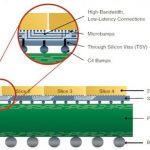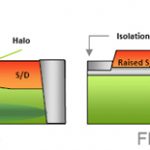As we move down into more and more advanced process nodes, the rules of how we test designs are having to change. One big challenge is the requirement to zoom in and fix problems by doing root cause analysis on test data alone, along with the rest of the design data such as detailed layout, optical proximity correction and so on. But without… Read More
Tag: 28nm
The Rosetta Stone of Lithography
At major EDA events, CEDA (the IEEE council on EDA, I guess you already know what that bit stands for) hosts a lunch and presentation for attendees and others. This week was ICCAD and the speaker was Lars Liebmann of IBM on The Escalating Design Impact of Resolution-Challenged Lithography. Lars decided to give us a whirlwind tour … Read More
Xilinx and TSMC: Volume Production of 3D Parts
A couple of weeks ago, Xilinx and TSMC announced the production release of the Virtex-7 HT family, the industry’s first heterogeneous 3D ICs in production. With this milestone, all Xilinx 28nm 3D IC families are now in volume production. These 28nm devices were developed on TSMC’s Chip-on-Wafer-on-Substrate (CoWoS)… Read More
The Alternative to FinFET: FD-SOI
Everywhere you turn these days you find FinFETs. Intel has had them since 22nm (they use the word Tri-gate but it is the same as what the world calls FinFET) and TSMC will have them at 16nm. So why FinFET? And is there an alternative?
The reason that regular bulk planar transistors have run out of steam is that the channel area underneath… Read More
Are 28nm Transistors the Cheapest…Forever?
It is beginning to look as if 28nm transistors, which are the cheapest per million gates compared to any earlier process such as 45nm, may also be the cheapest per million gates compared to any later process such as 20nm.
What we know so far: FinFET seems to be difficult technology because of the 3D structure and so the novel manufacturing… Read More
Intel Is Continuing to Scale While Others Pause
Back in May, William Holt, EVP of technology and manufacturing at Intel gave a presentation to analysts entitled Advancing Moore’s Law, Imperatives and Opportunity. A pdf of the presentation is available here. I just saw it for the first time today and I’m not sure how to get my head around it. It starts off with a lot … Read More
TSMC Q2 Results: Up 17%; 20nm and 16nm on track
TSMC announced their Q2 financial results yesterday. Revenue was $5.2B (at the high end of guidance) with net income of $1.6B. This is up 17.4% on Q1 and up 21.6% year-to-year. Gross margin is up too, at 49% which is up 3.2 points on Q1 and 0.3 points year-to-year. As usual the financial results are not directly that interesting since… Read More
The Semiconductor IDM Business Model is Dead!
While this was not specifically stated, it was certainly implied during the sessions I attended at SEMICON West this week: The traditional semiconductor business model (IDM) is coming to an end. Starting with the keynote: Foundry-driven Innovation in the Mobility Era,cost was the common theme in any discussion involving mobile… Read More
TSMC ♥ Solido
Process variation has been a top trending term since SemiWiki began as a result of the articles, wikis, and white papers posted on the Solido landing page. Last year Solido and TSMC did a webinar together, an article in EETimes, and Solido released a book on the subject. Process variation is a challenge today at 28nm and it gets worse… Read More
Moore, or More Than Moore?
Yesterday was the 2013 GSA Silicon Summit, which was largely focused on contrasting what advances in delivering systems will depend on marching down the ladder of process nodes, and which will depend on innovations in packaging technology. So essentially contrasting Moore’s Law with what has come to be known as More Than… Read More










